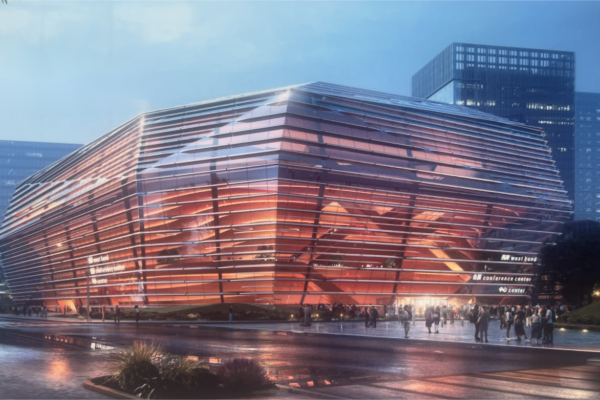Transform Your Space with Modern Architectural Glass Solutions
Architectural glass has revolutionized modern building design, offering an unparalleled combination of aesthetics, functionality, and sustainability. From soaring skyscrapers to intimate residential spaces, the choice of architectural glass can dramatically impact a project's success. Understanding the various options, characteristics, and applications of architectural glass is crucial for architects, designers, and property owners alike.
The evolution of architectural glass technology has created endless possibilities for creative expression while meeting stringent performance requirements. Today's architectural glass solutions offer enhanced energy efficiency, improved safety features, and innovative design capabilities that were unimaginable just a few decades ago.
Essential Properties of Architectural Glass
Thermal Performance and Energy Efficiency
Modern architectural glass plays a pivotal role in building energy performance. Low-emissivity (Low-E) coatings, multiple glazing layers, and gas-filled cavities work together to optimize thermal insulation. These features help maintain comfortable indoor temperatures while reducing heating and cooling costs.
Advanced solar control properties allow architects to manage heat gain effectively. Selective coatings can block unwanted infrared radiation while maximizing natural light transmission, creating bright, comfortable spaces that require less artificial lighting and climate control.
Structural Integrity and Safety Features
Safety considerations are paramount when selecting architectural glass. Tempered glass, which is four to five times stronger than standard glass, provides enhanced durability and breaks into small, rounded pieces when damaged, reducing injury risks. Laminated glass offers another safety solution by holding together when broken, making it ideal for overhead glazing and security applications.
The structural performance of architectural glass has improved dramatically with technological advances. New manufacturing processes create glass that can withstand greater loads, spanning larger areas with minimal support structure requirements.

Design Considerations and Aesthetic Options
Visual Characteristics and Light Control
The visual impact of architectural glass extends beyond simple transparency. Various tinting options, fritting patterns, and surface treatments allow designers to control light transmission and create distinctive visual effects. Digital printing technologies enable custom patterns and imagery to be permanently fused onto the glass surface.
Color selection in architectural glass can significantly influence both aesthetics and performance. From neutral clear glass to bold blue-green tints, the choices available can complement any architectural style while meeting specific performance requirements.
Surface Treatments and Textures
Modern architectural glass offers an array of surface treatments that can enhance both appearance and functionality. Acid-etched finishes provide elegant translucency while maintaining privacy. Sandblasted textures create depth and visual interest, perfect for interior applications or decorative exterior elements.
The combination of different surface treatments with various glass types opens up endless design possibilities. These treatments can be applied uniformly or in patterns, creating unique visual effects that transform as lighting conditions change throughout the day.
Performance Requirements and Building Codes
Regulatory Compliance and Standards
Selecting architectural glass involves navigating complex building codes and safety regulations. Different applications require specific performance ratings for impact resistance, thermal properties, and fire safety. Understanding these requirements early in the design process ensures compliance while avoiding costly modifications later.
Energy codes increasingly influence glass selection, particularly in commercial projects. LEED certification and other green building standards often require specific performance metrics for glazing systems, including solar heat gain coefficients and U-values.
Environmental Considerations
Sustainability has become a critical factor in architectural glass selection. Manufacturing processes, recycled content, and end-of-life recyclability all impact a product's environmental footprint. Many manufacturers now offer detailed environmental product declarations to help inform sustainable design decisions.
The long-term environmental impact of architectural glass extends beyond its production. Energy-efficient glazing systems can significantly reduce a building's carbon footprint over its lifetime, making initial material selection crucial for sustainable design.
Installation and Maintenance Factors
Professional Installation Requirements
Proper installation of architectural glass is crucial for both performance and safety. Specialized equipment and experienced professionals are essential for handling large glass panels and ensuring proper alignment and sealing. The installation process must account for thermal expansion, building movement, and weather conditions.
Quality control during installation includes careful inspection of edges, proper spacing of support systems, and verification of sealant compatibility. Professional installers must follow manufacturer specifications precisely to maintain warranty coverage and ensure long-term performance.
Long-term Maintenance Considerations
Maintaining architectural glass requires regular attention to preserve its appearance and performance. Different types of glass and surface treatments may require specific cleaning methods and schedules. Understanding maintenance requirements during the selection process helps ensure long-term satisfaction with the installation.
Professional cleaning services, especially for high-rise applications, should be factored into maintenance planning. Advanced coating technologies have made some glass products more resistant to dirt and easier to clean, potentially reducing long-term maintenance costs.
Frequently Asked Questions
What is the most energy-efficient type of architectural glass available?
Triple-pane insulated glass units with low-E coatings and argon gas fill typically provide the highest energy efficiency. These systems can achieve U-values as low as 0.15, significantly reducing heating and cooling costs while maintaining optimal visible light transmission.
How does architectural glass contribute to LEED certification?
Architectural glass can contribute to LEED points through energy performance, daylighting, and materials selection credits. High-performance glazing systems help reduce energy consumption, while proper glass selection can optimize natural light and views, enhancing occupant comfort and well-being.
What are the latest innovations in architectural glass technology?
Recent innovations include electrochromic glass that changes transparency on demand, integrated photovoltaic cells for energy generation, and ultra-thin vacuum insulated glazing. These technologies continue to expand the possibilities for sustainable and high-performance building design.
